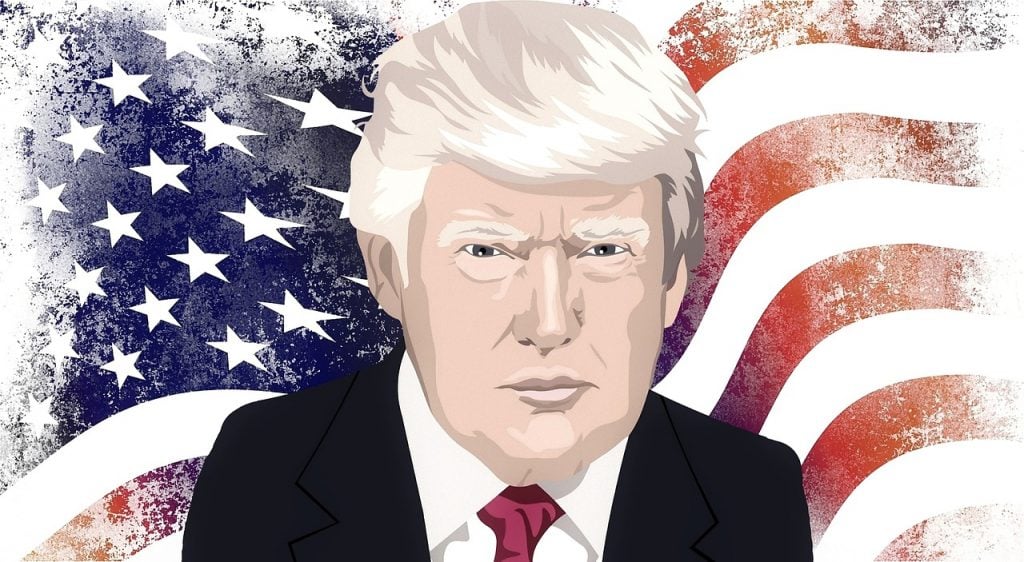Deputy Attorney General Trump does not need the Deputy Attorney General, he can fire Mueller himself
President Donald Trump’s anger over Special Counsel Robert Mueller’s very probing “witch hunt” investigation, and other alleged problems at the Department of Justice, has just been exacerbated by a New York Times report regarding Deputy Attorney General Rob Rosenstein.
This has triggered widespread speculation that Trump will use the piece as a justification to have Mueller fired, and thereby terminate the investigation.
Virtually all experts have said that Trump can do this in only one of two ways: (1) either by firing Deputy Attorney General Rosenstein, the person everyone agrees has the power to remove Mueller, and then replacing him with someone willing to remove Mueller from office, or (2) by getting Attorney General Jeff Sessions out of office by increasing the pressure on him or firing him, and then appointing a new attorney general who can undertake that task since he will not have to recuse himself.
Similarly, former acting Solicitor General Neal Katyal, who was involved in drafting the regulations under which Mueller was appointed, explained that there are only two paths by which Mueller could be fired. First, President Trump “would have to direct Rosenstein to fire Mueller” for some form of misconduct that rises to the level of “good cause.” Alternatively, “Trump could order the special-counsel regulations repealed and then fire Mueller himself.”
But largely overlooked is the scenario under which Trump himself bypasses Deputy Attorney General Rosenstein and Attorney General Sessions, and simply and directly fires Mueller by himself, says public interest law professor John Banzhaf, who played a role regarding two different special prosecutors.
This alternative has been largely ignored because Justice Department regulations, under which Mueller was appointed, provide [at 28 CFR 600.7(d)] that: “the Special Counsel may be disciplined or removed from office only by the personal action of the Attorney General. The Attorney General may remove a Special Counsel for misconduct, dereliction of duty, incapacity, conflict of interest, or for other good cause, including violation of Departmental policies.”
But, suggests Banzhaf, it is not clear that a mere regulation – one adopted without any action by Congress, and not even as the result of a typical notice and comment rulemaking proceeding – can override the inherent power of any president to remove those officers who serve under him in the executive branch.
Without such authority it has been argued, he cannot “take Care that the Laws be faithfully executed” as Article II, Section 3 of the Constitution requires.
Many recent Supreme Court and appellate cases involving limitations on the president’s power to remove officers have stressed the importance of this inherent power, and have generally upheld limitations on it only in unusual circumstances.
For example, it has long been true that Congress can limit the authority of the president to remove heads of independent agencies, and require that he take such action only if there is sufficient cause, but even this power has been largely untested.
In any event, in such circumstances, the courts are only recognizing the power of Congress to itself impose such limitations, and to do so regarding only so-called “independent agencies,” not those like the office of special counsel which lie within the executive branch.
For example, the first special prosecutor, Archibald Cox, had been appointed under regulations which provided that “[t]he Special Prosecutor will not be removed from his duties except for extraordinary improprieties on his part” Despite this very strong language, apparently neither the attorney general nor the deputy attorney general at the time believed that the regulation prevented the president from firing Cox, and Robert Bork, who eventually did remove Cox from office, said “I recognized that the president had a clear legal authority to fire Cox.”
Indeed, Bork reportedly said “I think that night all of us assumed that, as far as I know, Attorney General Richardson and Deputy Attorney General Ruckelshaus assumed that the regulation did not stand in the way of a presidential order . . . none of us thought that the regulation was a bar to a presidential order” and that everyone in the office, Richardson included, “assumed the President could [remove Cox] over an Attorney General’s regulation”
Subsequently, after Congress passed a special statute to authorize such appointments, the Supreme Court in Morrison v. Olsen upheld the power of Congress to limit the authority of the president to remove an “independent counsel,” permitting that decision to be left in the hands of the attorney general.
But once again that limitation was upheld only because it was in a statute which had been passed by Congress, and then signed by the president then in office. In stark contrast. Mueller’s appointment does not enjoy the protection of any statute, so the fact that a mere regulation might seem to limit the president’s removal power probably does not in fact or in law actually do so.
For example, law professor Josh Blackman has written that “Watergate teaches a third lesson: If someone in the chain of command follows Trump’s order to fire Mueller without a showing of ‘good cause,’ Section 600.7(d) will serve as no constitutional barrier. . . . President Trump has no duty to honor Deputy Attorney General Rosenstein’s unilateral decision. If he decides that Mueller, an inferior officer, must be removed without a showing of ‘good cause,’ he need only so order.”
As with many other unusual actions Trump has taken, the applicable law is far from clear – in large part because the actions are unusual. But “the law” is not what law professors and other experts opine. As Oliver Wendell Holmes taught us: “The prophecies of what the courts will do in fact, and nothing more pretentious, are what I mean by the law.”
So, if Trump were to exercise what he claims is his inherent constitutional power to fire any subordinate officer in the executive branch, and simply have the U.S. Marshall Service physically remove Mueller and his colleagues for their offices, any district court would likely to be reluctant to issue an order directly countermanding that decision, and returning Mueller and his team to office.
At the very least, such an action would create a constitutional crisis, with good legal arguments on both sides, says Banzhaf.
Moreover, he notes, Judge Gerhard Gesell’s ruling that “[t]he firing of Archibald Cox in the absence of a finding of extraordinary impropriety was in clear violation of an existing Justice Department regulation having the force of law and was therefore illegal” is very weak precedent to the contrary for at least three reasons.
First, the ruling that the firing was illegal was limited to the action of an official of the Department of Justice, and not of the president himself.
Second, the judge did not decide issues related to separation of powers or the President’s authority under Article II. Moreover, the ruling was later vacated by the D.C. Circuit.











